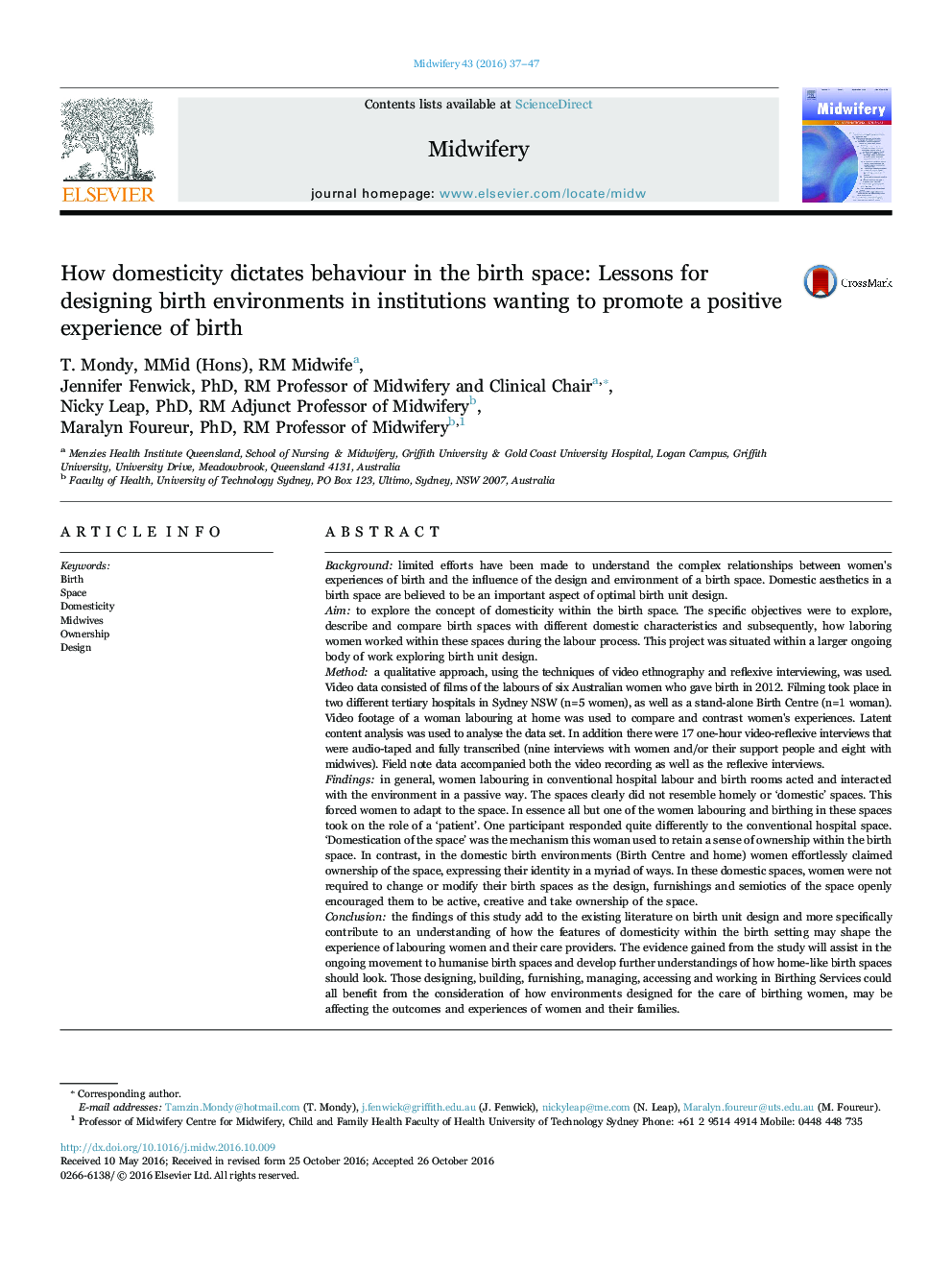| کد مقاله | کد نشریه | سال انتشار | مقاله انگلیسی | نسخه تمام متن |
|---|---|---|---|---|
| 5122271 | 1487141 | 2016 | 11 صفحه PDF | دانلود رایگان |
- Women labouring in conventional birth spaces interacted with the environment in a passive way.
- Domestic birth environments facilitated women's ownership of the space.
- Semiotics of domestic birth space encouraged women to be active and creative.
- Domestic birth spaces facilitated self-identity and personal agency.
Backgroundlimited efforts have been made to understand the complex relationships between women's experiences of birth and the influence of the design and environment of a birth space. Domestic aesthetics in a birth space are believed to be an important aspect of optimal birth unit design.Aimto explore the concept of domesticity within the birth space. The specific objectives were to explore, describe and compare birth spaces with different domestic characteristics and subsequently, how laboring women worked within these spaces during the labour process. This project was situated within a larger ongoing body of work exploring birth unit design.Methoda qualitative approach, using the techniques of video ethnography and reflexive interviewing, was used. Video data consisted of films of the labours of six Australian women who gave birth in 2012. Filming took place in two different tertiary hospitals in Sydney NSW (n=5 women), as well as a stand-alone Birth Centre (n=1 woman). Video footage of a woman labouring at home was used to compare and contrast women's experiences. Latent content analysis was used to analyse the data set. In addition there were 17 one-hour video-reflexive interviews that were audio-taped and fully transcribed (nine interviews with women and/or their support people and eight with midwives). Field note data accompanied both the video recording as well as the reflexive interviews.Findingsin general, women labouring in conventional hospital labour and birth rooms acted and interacted with the environment in a passive way. The spaces clearly did not resemble homely or 'domestic' spaces. This forced women to adapt to the space. In essence all but one of the women labouring and birthing in these spaces took on the role of a 'patient'. One participant responded quite differently to the conventional hospital space. 'Domestication of the space' was the mechanism this woman used to retain a sense of ownership within the birth space. In contrast, in the domestic birth environments (Birth Centre and home) women effortlessly claimed ownership of the space, expressing their identity in a myriad of ways. In these domestic spaces, women were not required to change or modify their birth spaces as the design, furnishings and semiotics of the space openly encouraged them to be active, creative and take ownership of the space.Conclusionthe findings of this study add to the existing literature on birth unit design and more specifically contribute to an understanding of how the features of domesticity within the birth setting may shape the experience of labouring women and their care providers. The evidence gained from the study will assist in the ongoing movement to humanise birth spaces and develop further understandings of how home-like birth spaces should look. Those designing, building, furnishing, managing, accessing and working in Birthing Services could all benefit from the consideration of how environments designed for the care of birthing women, may be affecting the outcomes and experiences of women and their families.
Journal: Midwifery - Volume 43, December 2016, Pages 37-47
